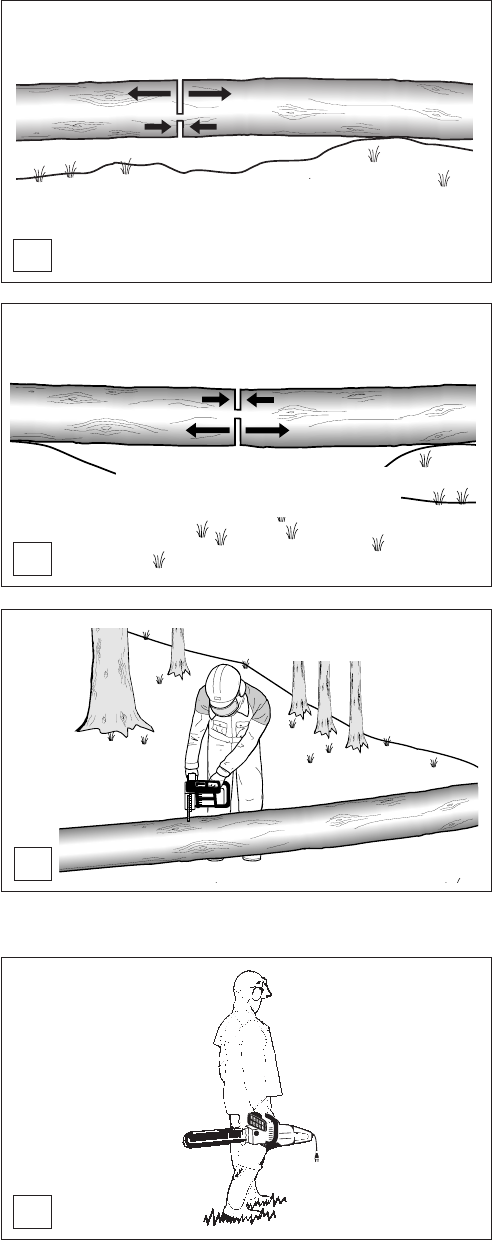
16
Tension side
Pressure side
Tension side
Pressure side
Bucking a log
Bucking is cutting a log into lengths. It is important to make sure
your footing is rm and your weight is evenly distributed on both
feet. When possible, the log shoutd be raised and supported by
the use of limbs, logs or chocks. Follow the simple directions
for easy cutting.
When the log is supported along its entire Iength as shown in
Fig. D, it is cut from the top (overbuck).
When the log is supported on one end, as shown in Fig. E,
cut 1/3 the diameter from the underside (underbuck ). Then
make the nished cut by overbucking to meet the rst cut.
When the log is supported on both ends, as shown in Fig. F, cut
1/3 of that diameter from the top overbuck. Then make the n-
ished cut by underbucking the lower 2/3 to meet the rst cut.
When bucking on a slope, always stand on the uphill side of
the log, as shown in Fig. G. When "cutting through", to maintain
complete control, release the cutting pressure near the end
of the cut without relaxing your grip on the chain saw handles.
Don't let the chain contact the ground. After completing the cut,
wait for the saw chain to stop before you move the chain saw.
Always stop the motor before moving from tree to tree.
Carrying tool
Carry the tool by the front handle with the tool turned off,
nger off the switch. Use the chain protection cover to cover
the guide bar and the saw chain.
E
F
2nd cut overbuck (2/3 diameter)
to meet 1st cut (to avoid pinching)
1st cut overbuck (1/3 diameter)
to avoid splintering
2nd cut underbuck (2/3 diameter)
to meet 1st cut (to avoid pinching)
G
Stand on uphill side when
cutting because log may roll.
H
1st cut underbuck (1/3 diameter)
to avoid splintering


















